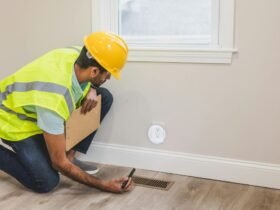Owning a home is a dream come true, but let’s be honest: unexpected repairs can quickly turn that dream into a stressful reality. Whether it’s a leaky roof during a rainstorm or a broken water heater in the dead of winter, these surprises always seem to show up at the worst times. It’s easy to feel overwhelmed, but with the right approach, you can tackle these challenges without losing your cool.
Handling home repairs doesn’t have to drain your wallet or your patience. By staying prepared and knowing a few practical tips, you’ll feel more confident the next time something goes wrong. After all, planning and resourcefulness can go a long way in keeping your home running smoothly.
Understanding Unexpected Home Repairs
Unexpected home repairs often stem from wear, weather damage, or aging infrastructure. Identifying potential problem areas in advance helps minimize surprises. Common triggers include plumbing issues, electrical failures, or foundational cracks.
Roofing adds significant complexity to home maintenance. Regular inspections, especially for homes in regions like Los Angeles, help detect leaks or structural damage early. Timely repairs prevent extensive costs from worsening roof conditions caused by weather or neglect. If you want a long-lasting, low-maintenance option, metal roofing in Los Angeles is worth considering. It’s durable, stylish, and built to handle the local weather.
Plumbing challenges, such as burst pipes or water heater malfunctions, emerge when systems go unchecked. Monitoring water pressure and scheduling annual maintenance limits abrupt failures. Acting swiftly in emergencies prevents water damage and additional expenses.
Electrical systems require attention due to wear from high energy demand. Circuit breaker trips or flickering lights indicate underlying issues. Consulting licensed electricians ensure safe and lasting fixes.
Foundational repairs become relevant when cracks or settling appear. Poor drainage or shifting soil often exacerbates these problems. Early detection through visual inspections preserves the structure and prevents escalated repair costs.
Routine home checks safeguard against unexpected damage. Create a repair fund to manage emergencies without financial stress. Proactive steps ensure a smoother, more manageable repair process.
Assessing the Situation
Unexpected home repairs can be overwhelming, but evaluating the problem promptly allows you to plan solutions effectively. Begin by understanding the scope of the issue before taking any action.
Identifying the Urgency
Recognize whether immediate action is necessary by reviewing the potential risks. Issues like leaking pipes or exposed wiring should be addressed quickly to prevent further damage or safety hazards. Non-urgent cases, like minor cosmetic repairs, can wait until resources and time are available. Examining whether delays exacerbate the damage helps prioritize tasks effectively.
Determining the Cause
Understanding what caused the issue enables better decision-making. Inspect the affected area for visible signs. For plumbing concerns, check for leaks around fixtures or under sinks. If electrical problems occur, test nearby outlets or observe appliance behavior for irregularities. For structural issues, search for cracks or settling in walls or floors. Knowing the root cause increases the likelihood of resolving the problem completely during repairs.
Expanding Past the Immediate Repair
While fixing the immediate issue, consider potential future problems. For example, if you find water damage in one wall, check adjacent areas for minor but manageable issues. Expand assessments to other parts of your home, like attic insulation or outdoor drainage, for comprehensive maintenance planning. Adopting this wider approach saves time and costs on future repairs.
Prioritizing Repairs
Sorting issues by urgency helps ensure your home remains safe and functional during unexpected repairs. Safety hazards take precedence, while cosmetic improvements can often wait.
Tackling Safety Concerns First
Focus on resolving repairs that pose immediate risks to health or property. Faulty wiring, for example, can create fire hazards and should be addressed by a licensed electrician. Leaking water pipes can cause structural damage and encourage mold growth, making plumbing repairs urgent. Addressing these high-priority repairs promptly prevents further complications and saves costs.
Addressing Cosmetic Issues Later
Non-urgent repairs, such as chipped paint or minor dents, can be scheduled after pressing concerns are resolved. Focusing first on critical repairs reduces the risk of escalating issues. Once immediate safety repairs are managed, enhancing your home’s appearance improves comfort and value. Examples include repainting, fixing loose tiles, or updating worn-out fixtures. Allocate resources strategically to maintain both form and function over time.
Budgeting for Repairs
Managing unexpected home repairs effectively requires careful financial planning. Establishing a dedicated budget minimizes stress and ensures you’re ready for unforeseen costs.
Setting Aside an Emergency Fund
Creating a home repair emergency fund provides a financial cushion for urgent issues. Set aside 1-3% of your home’s value annually for maintenance and repairs. For example, if your home is valued at $300,000, aim to save $3,000-$9,000 per year. This dedicated reserve helps cover costs like plumbing fixes, broken appliances, or structural repairs, reducing reliance on loans or credit cards. Assess your budget and prioritize this fund by cutting non-essential expenses if necessary.
Exploring Financing Options
Consider financing options for large and immediate repair costs. Home equity loans offer fixed rates and repayment terms based on your built-up equity. Personal loans are another option with faster approval but potentially higher interest rates. Check for contractor financing plans, which are often designed for extensive projects like roofing, HVAC systems, or foundation work. Evaluate all options carefully to ensure monthly payments fit your financial situation and avoid predatory lenders with excessive fees.
Get Professional Assistance When it’s Necessary
Certain repairs need licensed experts to guarantee safety and compliance with building codes. For example, electrical repairs, such as fixing circuit breakers or rewiring outlets, carry significant risks if improperly handled. Similarly, structural issues like foundation cracks or major roofing leaks require professional evaluation and repair to avoid further damage.
Consider the time and effort a project requires, especially if you’re balancing work or family commitments. Large-scale repairs, such as HVAC replacements or plumbing overhauls, often benefit from expert handling. Professionals bring experience and efficiency, minimizing disruptions to your routine.
Conclusion
Handling unexpected home repairs doesn’t have to feel overwhelming when you’re prepared and proactive. By staying organized, prioritizing urgent issues, and setting aside a repair fund, you can tackle challenges with confidence. Regular maintenance and smart planning go a long way in protecting your home and your peace of mind.
Remember, your home is an investment that thrives on care and attention. With the right approach, you’ll not only manage repairs more efficiently but also create a safer and more comfortable space for years to come.













